
-
Find the right food for your pet
Take this quiz to see which food may be the best for your furry friend.
Find the right food for your pet
Take this quiz to see which food may be the best for your furry friend.
Featured products
 Adult Perfect Weight & Joint Support Chicken Recipe Dry Dog Food
Adult Perfect Weight & Joint Support Chicken Recipe Dry Dog FoodThis weight management and mobility support dog food was created with Hill’s unique understanding of the biology of overweight dogs.
Shop Now Adult 7+ Perfect Digestion Chicken, Whole Oats & Brown Rice Recipe Dog Food
Adult 7+ Perfect Digestion Chicken, Whole Oats & Brown Rice Recipe Dog FoodScience Diet's breakthrough nutrition supports ultimate digestive well-being & healthy microbiome for dogs age 7+
Shop Now Adult 7+ No Corn, Wheat, Soy Chicken & Brown Rice Dog Food
Adult 7+ No Corn, Wheat, Soy Chicken & Brown Rice Dog FoodSupports energy level and beautiful coat in mature dogs
Shop NowFeatured products
 Adult Perfect Digestion Chicken, Barley & Whole Oats Recipe Cat Food
Adult Perfect Digestion Chicken, Barley & Whole Oats Recipe Cat FoodScience Diet's breakthrough nutrition supports ultimate digestive well-being & healthy microbiome
Shop Now Perfect Weight Salmon & Vegetable Canned Cat Food
Perfect Weight Salmon & Vegetable Canned Cat FoodOver 70% of cats lost weight within 10 weeks when fed this nutrition
Shop Now Adult Savory Chicken Entrée Cat Food
Adult Savory Chicken Entrée Cat FoodPrecisely balanced nutrition with the delicious taste of savory minced chicken to help fuel the energy needs of cats during the prime of their life
Shop Now -
Dog
- Dog Tips & Articles
-
Health Category
- Weight
- Food & Environmental Sensitivities
- Urinary
- Digestive
- Joint
- Kidney
-
Life Stage
- Puppy Nutrition
- Adult Nutrition
- Senior Nutrition
Cat
- Cat Tips & Articles
-
Health Category
- Weight
- Skin & Food Sensitivities
- Urinary
- Digestive
- Kidney
-
Life Stage
- Kitten Nutrition
- Adult Nutrition
Featured articles
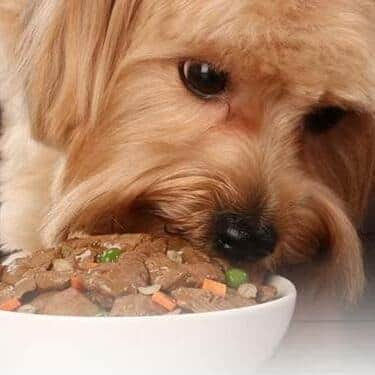 Pet Food Storage Tips
Pet Food Storage TipsDiscover how and where to store your dry, as well as canned, dog and cat food. Learn how to find the "best before" dates on all Hill's pet food packaging.
Read More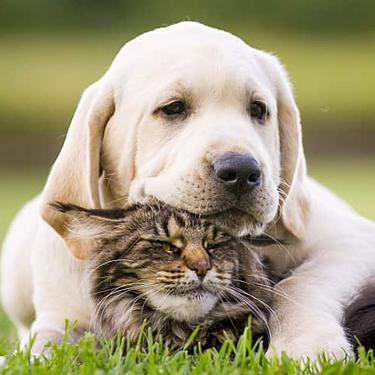 The Incredible Science Behind Your Pet's Microbiome
The Incredible Science Behind Your Pet's MicrobiomeLearn what a pet's microbiome is, how it contributes to your pet's gut & overall health, and why nutrition is important in maintaining healthy microbiomes.
Read More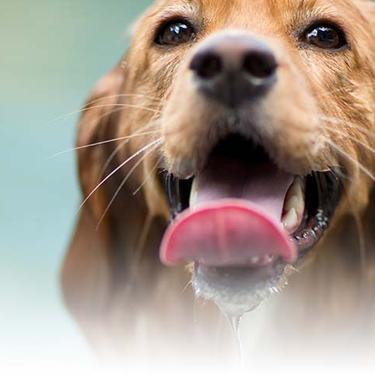 Water
WaterDiscover why water is the most important nutrient for your dog or cat to live a healthy life. Find out how much water your pet should consume each day.
Read More -
Find the right food for your pet
Find the right food for your pet


We've all watched it happen, and we've all wondered why. Now it's time to answer that age-old question: Why do dogs sniff each other's butts?
In short: It's their most effective method for a meet and greet. But why do dogs sniff butts specifically, as opposed to the other parts of their fellow canine companions? Let's take a look at this seemingly bizarre behavior.
Why Do Dogs Sniff Each Other's Butts?
"When one dog greets another with a nose in the derriere, (they're) basically getting a brief biography of (their) new friend, written in scent molecules and pheromones," according to an article by Mental Floss. Two pouches — known as anal sacs — produce these scents, which provide information to other dogs about everything from your pet's health and reproductive status, happiness, gender, owner and diet, the article said.
Dogs aren't the only creatures who get to know each other in this up-close-and-personal fashion, though. There are several other species whose anal glands secrete pheromones that communicate their information to others. For example, cats also have active anal glands. According to PetPlace, these glands "produce strong-smelling secretions intended to send chemical signals about that cat's identity to other animals."
But why do dogs sniff butts of pets and not their human pals? Well, this behavior isn't really about the butt, it's about the placement of those active glands. Humans are designed a bit differently, and the keys to our identity aren't located in quite the same places. So while butt sniffing might be more of an animal-to-animal behavior, gland sniffing spans across many of Earth's species.
Are Certain Dogs More Prone to Butt Sniffing?
Little is known about which dogs are more prone to butt sniffing. Butt sniffing is an equally prominent behavior in all breeds. Typically, the behavior transcends gender as well, although research published in the Journal of the International Society for Anthrozoology back in 1992 suggests that in public spaces, male dogs do more butt sniffing than females.
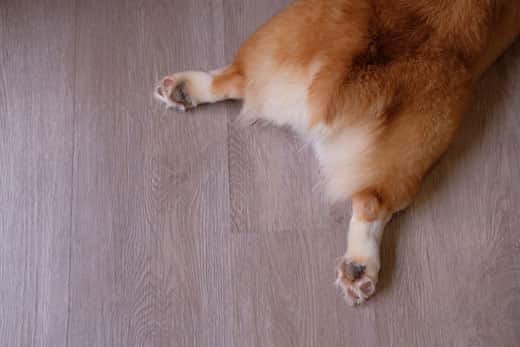

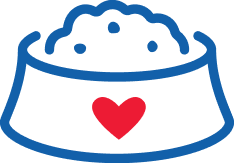
Tasty Tips
Can I Train My Pet Not to Sniff Other Dogs' Butts?
Butt sniffing is a totally normal dog behavior, and it's truly the best way for two pets to get to know each other. If you have concerns about the way your dog approaches other dogs, though, an experienced behaviorist may be able to help you teach your dog to temper their enthusiasm or aggression and make more calm introductions. You may also want to train your dog to sit and stay when they encounter other dogs and ask those approaching to please respect your dog's space.
You will definitely want to spend quality time training your dog to listen to commands such as sit, stay and come, regardless of if they're an aggressive butt sniffer or more on the shy and gentle side. That way, if your dog meets another pet who isn't comfortable getting sniffed, you can quickly regain control of the situation by giving your dog a simple order.
Your veterinarian or a pet care professional may be able to further advise you on ways to modify your dog's greeting behavior. However, it's unlikely that you'll be able to stop your dog from sniffing other dog's butts altogether.
My Dog Isn't a Butt Sniffer — Should I Worry?
If your dog doesn't sniff butts and you're concerned, schedule time to meet with your vet. It's very possible that your dog just isn't feeling social or, perhaps, prefers people to dogs. Your dog may also be fearful or anxious based on previous negative experiences. However, you'll want to confirm that your dog's sense of smell is intact — especially if this is a sudden change in behavior — and a trip to the vet can ensure everything's in working order.
Why do dogs sniff each other's butts? It's the same reason why you shake hands with your coworkers: to get to know them a little better. So the next time you see it happen, try not to be embarrassed. After all, butt sniffing is simply a sign that you've got a budding socialite on your hands.


Erin Ollila believes in the power of words and how a message can inform—and even transform—its intended audience. Her writing can be found all over the internet and in print, and includes interviews, ghostwriting, blog posts, and creative nonfiction. Erin is a geek for SEO and all things social media. She graduated from Fairfield University with an M.F.A. in Creative Writing. Reach out to her on Twitter @ReinventingErin or learn more about her at http://erinollila.com.
Related products

This weight management and mobility support dog food was created with Hill’s unique understanding of the biology of overweight dogs.

Supports energy level and beautiful coat in mature dogs

Delicious braised beef paired with tender vegetables in a succulent stew

Science Diet's breakthrough nutrition supports ultimate digestive well-being & healthy microbiome for dogs age 7+
Related articles

Proper nutrition for your pregnant or nursing dog is vital to her and her puppy's health. Learn what you should do provide her with the proper nutrients.

Learn about Hill's puppy food and the nutritional benefit & high quality ingredients that it contains for your pup.

Large and giant breed puppies have different nutritional needs than other dogs. Learn how to provide the special care they need to grow up big and strong.

Understand the role that Omega-6 and Omega-3 fatty acids play in your dog's overall health, and how you can ensure they are getting enough.

Put your dog on a diet without them knowing
Our low calorie formula helps you control your dog's weight. It's packed with high-quality protein for building lean muscles, and made with purposeful ingredients for a flavorful, nutritious meal. Clinically proven antioxidants, Vitamin C+E, help promote a healthy immune system.
Put your dog on a diet without them knowing
Our low calorie formula helps you control your dog's weight. It's packed with high-quality protein for building lean muscles, and made with purposeful ingredients for a flavorful, nutritious meal. Clinically proven antioxidants, Vitamin C+E, help promote a healthy immune system.

